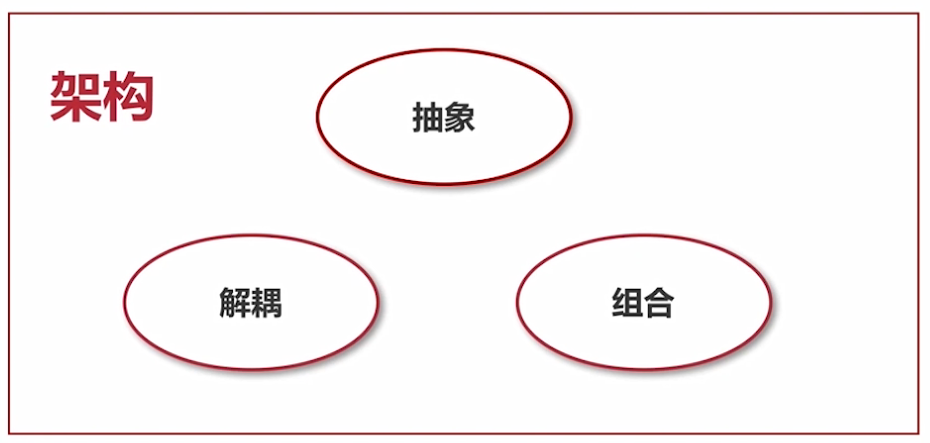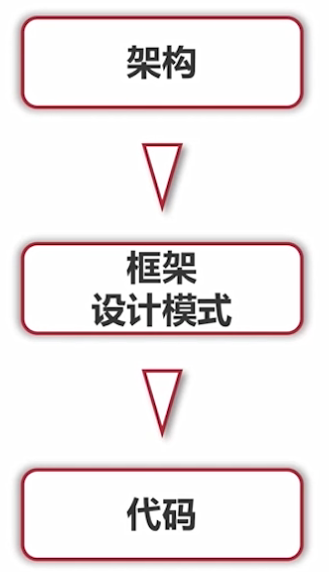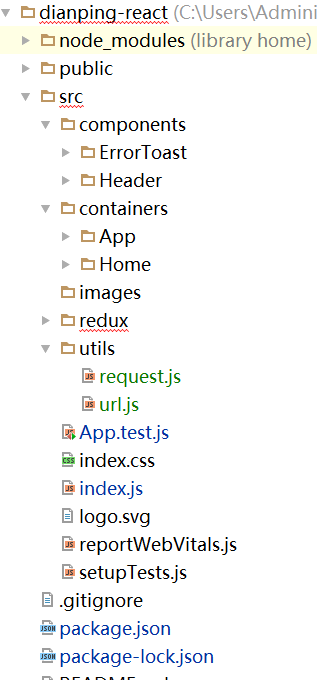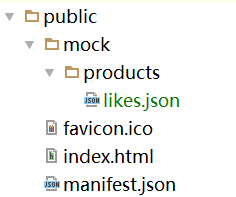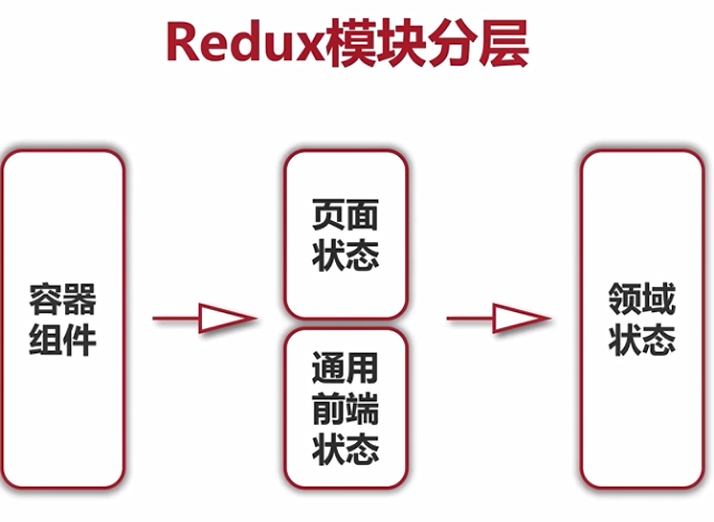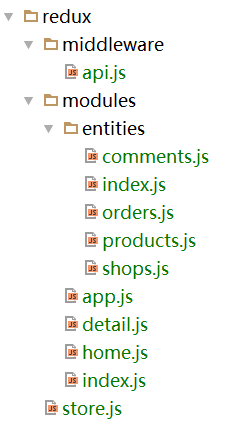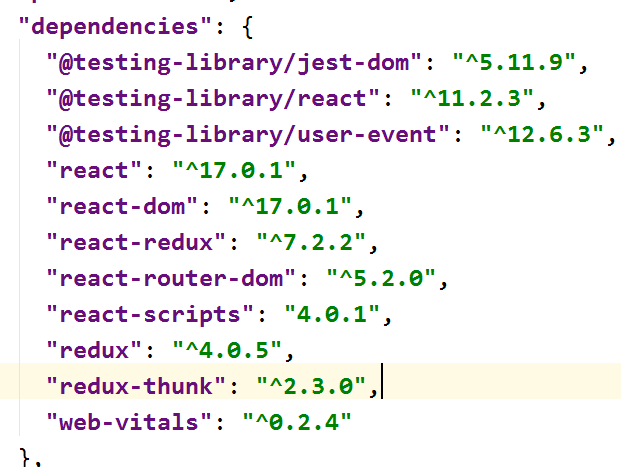前言:react、redux、react-router构建项目。
一、前端架构是什么
前端架构的特殊性
前端不是一个独立的子系统,又横跨整个系统
分散性:前端工程化
页面的抽象、解耦、组合
可控:脚手架、开发规范等
高效:框架、组件库、Mock平台,构建部署工具等
抽象
页面UI抽象:组件
通用逻辑抽象:领域实体、网络请求、异常处理等
二、案例分析
功能路径
展示:首页->详情页
搜索:搜索页->结果页
购买:登录->下单->我的订单->注销
三、前端架构之工程化准备:技术选型和项目脚手架
技术选型考虑的三要素
业务满足程度
技术栈的成熟度(使用人数、周边生态、仓库维护等)
团队的熟悉度
技术选型
UI层:React
路由:React Router
状态管理:Redux
脚手架
Create React App
|
1
|
npx create-react-app dianping-react
|
四、前端架构之工程化准备:基本规范
基本规范
目录结构
构建体系
Mock数据
|
1
2
3
4
5
6
7
8
9
10
11
12
13
14
15
16
17
18
19
20
21
22
23
24
25
26
27
28
29
30
31
32
33
34
35
36
37
38
39
40
41
42
43
44
45
46
47
48
49
50
51
52
53
54
55
56
57
58
59
|
//likes.json
[
{
"id": "p-1",
"shopIds": ["s-1","s-1","s-1"],
"shop": "院落创意菜",
"tag": "免预约",
"picture": "https://p0.meituan.net/deal/e6864ed9ce87966af11d922d5ef7350532676.jpg.webp@180w_180h_1e_1c_1l_80q|watermark=0",
"product": "「3店通用」百香果(冷饮)1扎",
"currentPrice": 19.9,
"oldPrice": 48,
"saleDesc": "已售6034"
},
{
"id": "p-2",
"shopIds": ["s-2"],
"shop": "正一味",
"tag": "免预约",
"picture": "https://p0.meituan.net/deal/4d32b2d9704fda15aeb5b4dc1d4852e2328759.jpg%40180w_180h_1e_1c_1l_80q%7Cwatermark%3D0",
"product": "[5店通用] 肥牛石锅拌饭+鸡蛋羹1份",
"currentPrice": 29,
"oldPrice": 41,
"saleDesc": "已售15500"
},
{
"id": "p-3",
"shopIds": ["s-3","s-3"],
"shop": "Salud冻酸奶",
"tag": "免预约",
"picture": "https://p0.meituan.net/deal/b7935e03809c771e42dfa20784ca6e5228827.jpg.webp@180w_180h_1e_1c_1l_80q|watermark=0",
"product": "[2店通用] 冻酸奶(小杯)1杯",
"currentPrice": 20,
"oldPrice": 25,
"saleDesc": "已售88719"
},
{
"id": "p-4",
"shopIds": ["s-4"],
"shop": "吉野家",
"tag": "免预约",
"picture": "https://p0.meituan.net/deal/63a28065fa6f3a7e88271d474e1a721d32912.jpg%40180w_180h_1e_1c_1l_80q%7Cwatermark%3D0",
"product": "吉汁烧鱼+中杯汽水/紫菜蛋花汤1份",
"currentPrice": 14,
"oldPrice": 23.5,
"saleDesc": "已售53548"
},
{
"id": "p-5",
"shopIds": ["s-5"],
"shop": "醉面 一碗醉香的肉酱面",
"tag": "免预约",
"picture": "https://p1.meituan.net/deal/a5d9800b5879d596100bfa40ca631396114262.jpg.webp@180w_180h_1e_1c_1l_80q|watermark=0",
"product": "单人套餐",
"currentPrice": 17.5,
"oldPrice": 20,
"saleDesc": "已售23976"
}
]
|
五、前端架构之抽象1:状态模块定义
抽象1:状态模块定义
商品、店铺、订单、评论 —— 领域实体模块(entities)
各页面UI状态 —— UI模块
前端基础状态:登录态、全局异常信息
|
1
2
3
4
5
6
7
8
9
10
11
12
13
14
|
//redux->modules->index.js
import { combineReducer } from "redux";
import entities from "./entities";
import home from "./home";
import detail from "./detail";
import app from "./app";
//合并成根reducer
const rootReducer = combineReducer({
entities,
home,
detail,
app
})
|
export default rootReducer
|
1
2
3
4
5
6
|
//各子reducer.js
const reducer = (state = {}, action) => {
return state;
}
export default reducer;
|
六、前端架构之抽象2:网络请求层封装(redux-thunk) (redux中间件)
抽象2:网络请求层
原生的fetch API封装get、post方法
|
1
2
3
4
5
6
7
8
9
10
11
12
13
14
15
16
17
18
19
20
21
22
23
24
25
26
27
28
29
30
31
32
33
34
35
36
37
38
39
40
41
42
43
44
45
46
47
48
49
50
51
|
//utils->request.js
//设置响应的header,抽象成一个常量
const headers = new Headers({
"Accept": "application/json",
"Content-Type": "application/json"
})
//get方法处理get请求
function get(url) {
return fetch(url, {
method: "GET",
headers: headers
}).then(response => { //fetch返回的是一个promise对象,.then方法中可以解析出fetch API返回的数据
handleResponse(url, response); //response的通用处理:区分符合业务正常预期的response和异常的response
}).catch(err => { //catch中捕获异常,对异常的处理和handleResponse基本保持一致
console.log(`Request failed. url = ${url}. Message = ${err}`)
return Promise.reject({error: {
message: "Request failed." //不能说“服务端信息异常”了,因为还没到服务端
}})
})
}
//post方法处理post请求, 多一个data参数
function post(url, data) {
return fetch(url, {
method: "POST",
headers: headers,
body: data
}).then(response => {
handleResponse(url, response);
}).catch(err => {
console.log(`Request failed. url = ${url}. Message = ${err}`)
return Promise.reject({error: {
message: "Request failed."
}})
})
}
//基本的对response处理的函数(重在思路,项目都大致相同)
function handleResponse(url, response){
if(response.status === 200){ //符合业务预期的正常的response
return response.json()
}else{
console.log(`Request failed. url = ${url}`) //输入错误信息
return Promise.reject({error: { //为了response可以继续被调用下去,即使在异常的情况下也要返回一个promise结构,生成一个reject状态的promise
message: "Request failed due to server error"
}})
}
}
export {get, post}
|
项目中使用到的url基础封装
|
1
2
3
4
5
6
7
8
9
10
|
//utils->url.js
//创建一个对象,对象中每一个属性是一个方法
export default {
//获取产品列表
getProductList: (path, rowIndex, pageSize) => `/mock/products/${path}.json?rowIndex=${rowIndex}&pageSize=${pageSize}`,
//获取产品详情
getProductDetail: (id) => `/mock/product_detail/${id}.json`,
//获取商品信息
getShopById: (id) => `/mock/shops/${id}.json`
}
|
常规使用方式 (redux层比较臃肿、繁琐)
|
1
2
3
4
5
6
7
8
9
10
11
12
13
14
15
16
17
18
19
20
21
22
23
24
25
26
27
28
29
30
31
32
33
34
35
36
37
38
39
40
41
42
43
44
45
46
47
48
49
50
51
52
53
54
55
56
57
58
59
60
61
62
63
64
65
66
67
|
//redux->modules->home.js(首页)
import {get} from "../../utils/request"
import url from "../../utils/url"
//action types
export const types = {
//获取猜你喜欢请求: 值的第一部分以模块名(HOME)作为命名空间,防止action type在不同的模块中发生冲突, 第二部分为type名
FETCH_LIKES_REQUEST: "HOME/FETCH_LIKES_REQUEST",
//获取猜你喜欢请求成功
FETCH_LIKES_SUCCESS: "HOME/FETCH_LIKES_SUCCESS",
//获取猜你喜欢请求失败
FETCH_LIKES_FAILURE: "HOME/FETCH_LIKES_FAILURE"
}
//action: 所有的action放在一个actions对象下
export const actions = {
//获取猜你喜欢数据的action
loadLikes: () => {
return (dispatch, getState) => { //返回一个函数,接收dispatch 和 getState两个参数
dispatch(fetchLikesRequest()); //第一步:dispatch一个请求开始的action type
return get(url.getProductList(0, 10)).then( //通过get方法进行网络请求
data => { //请求成功时,dispatch出去data
dispatch(fetchLikesSuccess(data))
//其实在开发中还需要dispatcn一个module->product中提供的action,由product的reducer中处理,才能将数据保存如product中
//dispatch(action)
},
error => { //请求失败时,dispatch出去error
dispatch(fetchLikesFailure(error))
}
)
}
}
}
//action creator
//不被外部组件调用的,为action type所创建的action creator(所以不把它定义在actions内部,而定义在外部,且不把它导出export)
const fetchLikesRequest = () => ({
type: types.FETCH_LIKES_REQUEST
})
const fetchLikesSuccess = (data) => ({
type: types.FETCH_LIKES_SUCCESS,
data
})
const fetchLikesFailure = (error) => ({
type: types.FETCH_LIKES_FAILURE,
error
})
//reducer:根据action type处理不同逻辑
const reducer = (state = {}, action) => {
switch(action.type) {
case types.FETCH_LIKES_REQUEST: //获取请求
//todo
case types.FETCH_LIKES_SUCCESS: //请求成功
//todo
case types.FETCH_LIKES_FAILURE: //请求失败
//todo
default:
return state;
}
return state;
}
export default reducer;
|
|
1
2
3
4
5
6
|
//redux->modules->entities->products.js
const reducer = (state = {}, action) => {
return state;
}
export default reducer;
|
使用redux中间件封装(简化模板式内容的编写)
|
1
2
3
4
5
6
7
8
9
10
11
12
13
14
15
16
17
18
19
20
21
22
23
24
25
26
27
28
29
30
31
32
33
34
35
36
37
38
39
40
41
42
43
44
45
46
47
48
49
50
51
52
53
54
55
56
57
58
59
60
61
62
63
64
65
66
67
68
|
//redux->modules->home.js(首页)
import {get} from "../../utils/request"
import url from "../../utils/url"
import { FETCH_DATA } from "../middleware/api"
import { schema } from "./entities/products"
export const types = {
//获取猜你喜欢请求
FETCH_LIKES_REQUEST: "HOME/FETCH_LIKES_REQUEST",
//获取猜你喜欢请求成功
FETCH_LIKES_SUCCESS: "HOME/FETCH_LIKES_SUCCESS",
//获取猜你喜欢请求失败
FETCH_LIKES_FAILURE: "HOME/FETCH_LIKES_FAILURE"
}
//简化模板式内容需要的特殊结构 —— 代表使用redux-thunk进行网络请求的过程
//(
// FETCH_DATA:{ //表明action是用来获取数据的
// types:['request', 'success", 'fail'],
// endpoint: url, //描述请求对应的url
// //schema在数据库中代表表的结构,这里代表领域实体的结构
// schema: { //需要的原因:假设获取的是商品数据,当中间件获取到商品数据后还需要对数组格式的数据作进一步“扁平化”处理,转译成Key:Value形式
// id: "product_id", //领域数据中的哪一个属性可以代表这个领域实体的id值
// name: 'products' //正在处理的是哪一个领域实体(相当于中间件在处理数据库表时哪一张表的名字)
// }
// }
//}
export const actions = {
//简化版的action
loadLikes: () => {
return (dispatch, getState) => {
const endpoint = url.getProductList(0, 10)
return dispatch(fetchLikes(endpoint)) //dispatch特殊的action,发送获取请求的(中间件)处理
}
}
}
//特殊的action, 用中间件可以处理的结构
const fetchLikes = (endpoint) => ({
[FETCH_DATA]: {
types: [
types.FETCH_LIKES_REQUEST,
types.FETCH_LIKES_SUCCESS,
types.FETCH_LIKES_FAILURE
],
endpoint,
schema
},
//params 如果有额外的参数params, 当获取请求成功(已经发送FETCH_LIKES_SUCCESS)后,
// 希望params可以被后面的action接收到, action需要做【增强处理】
})
const reducer = (state = {}, action) => {
switch(action.type) {
case types.FETCH_LIKES_REQUEST:
//todo
case types.FETCH_LIKES_SUCCESS:
//todo
case types.FETCH_LIKES_FAILURE:
//todo
default:
return state;
}
return state;
}
export default reducer;
|
|
1
2
3
4
5
6
7
8
9
10
11
12
13
14
15
16
|
//redux->modules->entities->products.js
//schema在数据库中代表的是表的结构,这里代表领域实体的结构
export const schema = {
name: 'products', //领域实体的名字,products挂载到redux的store的属性的名称,保持和文件名相同
id: 'id' //标识了领域实体的哪一个字段是用来作为id解锁数据的
}
const reducer = (state = {}, action) => {
if(action.response && action.response.products){ //(如果)获取到的数据是一个对象{[name]: KvObj, ids},name是领域实体名字,这里是products
//将获取到的数据保存【合并】到当前的products【领域数据状态】中,并且数据是通过中间件扁平化的key value形式的数据
return {...state, ...action.response.products}
}
return state;
}
export default reducer;
|
|
1
2
3
4
5
6
7
8
9
10
11
12
13
14
15
16
17
18
19
20
21
22
23
24
25
26
27
28
29
30
31
32
33
34
35
36
37
38
39
40
41
42
43
44
45
46
47
48
49
50
51
52
53
54
55
56
57
58
59
60
61
62
63
64
65
66
67
68
69
70
71
72
73
74
75
76
77
78
79
80
81
82
|
//redux->middleware->api.js
import { get } from "../../utils/request" //对get请求进行中间件的封装
// update(修改)、delete(删除)同理,只是在调用api请求成功的数据处理中有一些区别
// 大众点评项目只是纯前端项目,不能直接进行修改和删除的api处理,这里不作展示
//经过中间件处理的action所具有的标识
export const FETCH_DATA = 'FETCH_DATA'
//中间件的函数式声明
export default store => next => action => {
const callAPI = action[FETCH_DATA] //解析有FETCH_DATA字段的action就是是需要中间件处理的action
//类型判断:如果是undefined,表明action不是一个用来获取数据的action,而是一个其它类型的action, 中间件放过对这个action的处理
if(typeof callAPI === 'undefined'){
return next(action) //直接交由后面的中间件进行处理
}
const { endpoint, schema, types } = callAPI //交由这个中间件进行处理的action的三个属性,必须符合一定的规范
if(typeof endpoint !== 'string'){
throw new Error('endpoint必须为字符串类型的URL')
}
if(!schema){
throw new Error('必须指定领域实体的schema')
}
if(!Array.isArray(types) && types.length !== 3){
throw new Error('需要指定一个包含了3个action type的数组')
}
if(!types.every(type => typeof type === 'string')){
throw new Error('action type必须为字符串类型')
}
//【增强版的action】——保证额外的参数data会被继续传递下去
const actionWith = data => {
const finalAction = {...action, ...data} //在原有的action基础上,扩展了data
delete finalAction[FETCH_DATA] //将原action的FETCH_DATA层级的属性删除掉
//因为经过中间件处理后,再往后面的action传递的时候就已经不需要FETCH_DATA这一层级的属性了
return finalAction
}
const [requestType, successType, failureType] = types
next(actionWith({type: requestType})) //调用next,代表有一个请求要发送
return fetchData(endpoint, schema).then( //【真正的数据请求】—— 调用定义好的fetchData方法,返回的是promise结构
response => next(actionWith({ //拿到经过处理的response, 调用next发送响应成功的action
type: successType,
response //获取到的数据response —— 是一个对象 {[name]: KvObj, ids},name是领域实体名字如products
}))
error => next(actionWith({
type: failureType,
error: error.message || '获取数据失败'
}))
)
}
//【执行网络请求】
const fetchData = (endpoint, schema) => {
return get(endpoint).then(data => { //对get请求进行中间件的封装, endpoint对应请求的url, 解析获取到的数据data
return normalizeData(data, schema) //调用normalizeData方法,对获取到的data数据,根据schema进行扁平化处理
})
}
//根据schema, 将获取的数据【扁平化处理】
const normalizeData = (data, schema) => {
const {id, name} = schema
let kvObj = {} //领域数据的扁平化结构 —— 定义kvObj作为最后存储扁平化数据【对象】的变量
let ids = [] //领域数据的有序性 —— 定义ids【数组结构】存储数组当中获取的每一项的id
if(Array.isArray(data)){ //如果返回到的data是一个数组
data.forEach(item => {
kvObj[item[id]] = item
ids.push(item[id])
})
} else { //如果返回到的data是一个对象
kvObj[data[id]] = data
ids.push(data[id])
}
return {
[name]: kvObj, //不同领域实体的名字,如products
ids
}
}
|
|
1
2
3
4
5
6
7
8
9
10
11
12
13
14
15
16
17
18
19
20
21
|
//redux->store.js
import { createStore, applyMiddleware } from "redux"<br>
//处理异步请求(action)的中间件
import thunk from "redux-thunk"
import api from "./middleware/api"
import rootReducer from "./modules"
let store;
if (
process.env.NODE_ENV !== "production" &&
window.__REDUX_DEVTOOLS_EXTENSION__
) {
const composeEnhancers = window.__REDUX_DEVTOOLS_EXTENSION_COMPOSE__;
store = createStore(rootReducer, composeEnhancers(applyMiddleware(thunk, api)));
} else {
store = createStore(rootReducer, applyMiddleware(thunk, api)); //将中间件api添加到redux的store中
}
export default store
|
七、前端架构之抽象3:通用错误处理
抽象3:通用错误处理
错误信息组件 —— ErrorToast会在一定时间内消失
|
1
2
3
4
5
6
7
8
9
10
11
12
13
14
15
16
17
18
19
20
21
22
23
24
25
26
27
28
29
30
31
|
//component->ErrorToast->index.js
import React, { Component } from 'react'
import "./style.css";
class ErrorToast extends Component {
render() {
const { msg } = this.props
return (
<div className="errorToast">
<div className="errorToast_text">
{msg}
</div>
</div>
);
}
componentDidMount() {
this.timer = setTimeout(() => {
this.props.clearError();
}, 3000)
}
componentWillUnmount() {
if(this.timer) {
clearTimeout(this.timer)
}
}
}
export default ErrorToast;
|
错误状态
|
1
2
3
4
5
6
7
8
9
10
11
12
13
14
15
16
17
18
19
20
21
22
23
24
25
26
27
28
29
30
31
32
33
34
35
|
//redux->modlues->app.js
/**
* 前端的通用基础状态
*/
const initialState = {
error: null
}
export const types = {
CLEAR_ERROR: "APP/CLEAR_ERROR"
}
//action creators
export const actions = {
clearError: () => ({
type: types.CLEAR_ERROR
})
}
const reducer = (state = initialState, action) => {
const { type, error } = action
if(type === types.CLEAR_ERROR) {
return {...state, error: null}
}else if(error){
return {...state, error: error}
}
return state;
}
export default reducer;
//selectors
export const getError = (state) => {
return state.app.error
}
|
|
1
2
3
4
5
6
7
8
9
10
11
12
13
14
15
16
17
18
19
20
21
22
23
24
25
26
27
28
29
30
31
32
33
|
//containers->App->index.js
import React, { Component } from 'react';
import { bindActionCreators } from 'redux';
import { connect } from 'react-redux';
import ErrorToast from "../../components/ErrorToast";
import { actions as appActions, getError } from '../../redux/modules/app'
import './style.css';
class App extends Component {
render() {
const {error, appActions: {clearError}} = this.props;
return (
<div className="App">
{error ? <ErrorToast msg={error} clearError={clearError}/> : null}
</div>
)
}
}
const mapStateToProps = (state, props) => {
return {
error: getError(state)
}
}
const mapDispatchToProps = (dispatch) => {
return {
appActions: bindActionCreators(appActions, dispatch)
}
}
export default connect(mapStateToProps, mapDispatchToProps)(App);
|
注:项目来自慕课网
今天的文章前端架构_前端架构师是做什么的分享到此就结束了,感谢您的阅读,如果确实帮到您,您可以动动手指转发给其他人。
版权声明:本文内容由互联网用户自发贡献,该文观点仅代表作者本人。本站仅提供信息存储空间服务,不拥有所有权,不承担相关法律责任。如发现本站有涉嫌侵权/违法违规的内容, 请发送邮件至 举报,一经查实,本站将立刻删除。
如需转载请保留出处:https://bianchenghao.cn/50774.html

